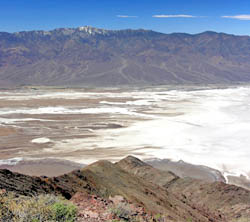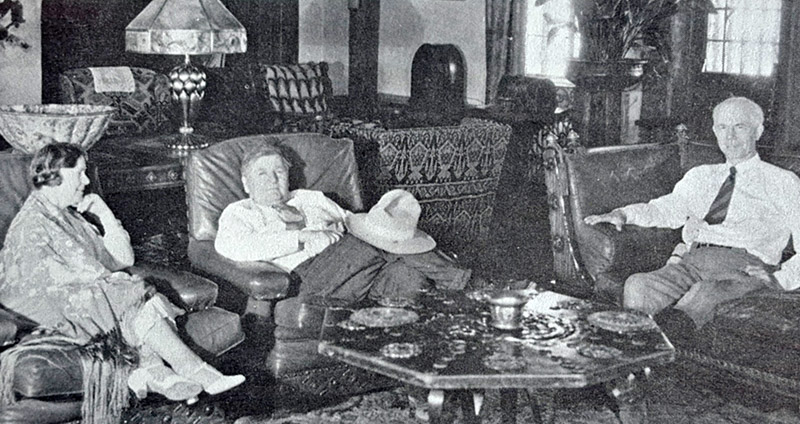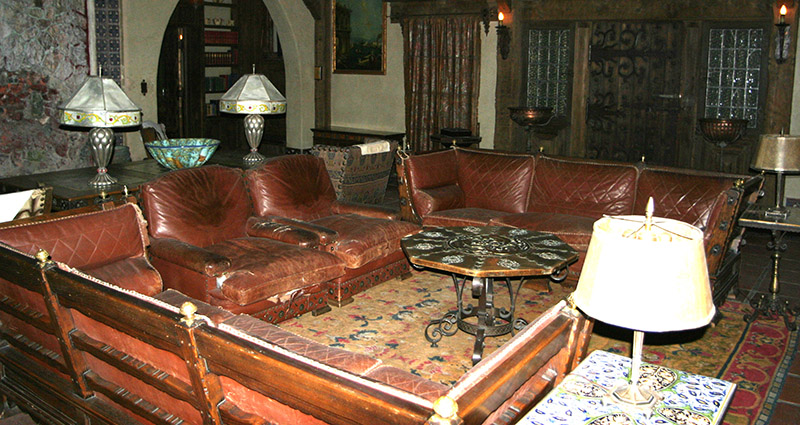Death Valley
How to Visit Death Valley:
This is an introductory tour to the places to see and experience in and around Death Valley National Park. We’ve all heard of Death Valley. Maybe, some of us have been attracted to the name Death Valley because there might be a hint of danger and adventure. Others may have been attracted to its unique features, such as its colorful geology and history. But what is in Death Valley, what does it look like and where is it located? Well, this article and accompanying virtual video tour should help give you an idea.


Extreme heat, extreme dryness and extreme beauty. It is one of North America’s most unique regions and one of the biggest national parks. The combinations of geological forces here have created a magnificently rugged and colorful desert landscape that’s surrounded by 11,000+ ft. snow-capped peaks making it a place without equal!
One of the many interesting facts about Death Valley is that the lowest spot in North America is located in Death Valley. What’s even more interesting is that this lowest spot is less than 100 miles from the highest spot in the contiguous 48 states. Another fact about Death Valley that seems to surprise most people is that the harsh climate here is home to a wide variety of both plants and animals.
So you want to visit Death Valley?
This article provides a few pointers on planning a trip to Death Valley. Scrolling down will mention a few things on Death Valley’s more popular attractions. If you like exploring with wheels, both on and off pavement, or with your own two feet, then there are dozens of attractions to visit. Death Valley is also rich in history, including some pretty crazy tales. People come from all over to see Death Valley’s unique and colorful geology that exists nowhere else in North America but here.
One of the best ways to learn about Death Valley is to visit one of the area visitor centers or museums. Scrolling down will include an interactive map showing where such facilities are located that we have visited and feel you should too.
Our article also includes a virtual video tour that points out and shows what different places and attractions look like. This will help you choose what you’d like to take the time to see for yourself.
Naturally, you will need to stay a night or two in the Death Valley region during your visit. We don’t recommend just doing a day trip from say, Las Vegas. Below is an interactive map showing where hotels, fuel and supplies are located. Since there are many campgrounds, we do not point those out, however there are campgrounds at the same locations where hotels are located.
We are certain this article will help you plan your foray into Death Valley. Providing you fall in love with the area like we did, then we invite you to learn about our own on-line “virtual tour guide” of Death Valley. It has a wealth of information. Its goal is to help you learn about places and activities that may or may not interest you by viewing the thousands of pictures of the area, along with detailed maps and descriptions. Identifying what interests you will help you plan your time accordingly.
World’s Hottest Place
On July 10, 1913, the daily temperature reading at Furnace Creek in Death Valley was taken. It was 134 degrees (57 C). Soon this was recognized as the hottest temperature ever recorded on Earth. However, less than a decade later in 1922, 136 degrees was recorded in the desert of Libya. Although Death Valley temperatures ventured into the 130 range several times since 1913, they never surpassed 134.
When the 2011 revolution in Libya exposed numerous government records, the World Meteorological Organization was able to determine that the 136 record taken in Libya could not have ever occurred. Thus, the original record holder for the “world’s hottest temperature” went back to Death Valley. So what was Omar Gaddafi’s loss ended up being Death Valley’s gain.
Wildflower Blooms
One of the more popular attractions in Death Valley is its wildflower blooms that occur usually around March and April. One of the biggest blooms in modern times occurred in 2005. It occurred in late March and followed very abundant rainfall in December and January. There was so much rainfall in and around Death Valley, that the dry lake bed of Death Valley, known as ancient Lake Manly, actually became a large lake for several months.
Predicting when a bloom will occur is tricky. It usually follows 2-4 months after significant rainfall. It also depends on where the rain occurred and how hard or soft it fell. Some parts of Death Valley will be covered with flowers because this is where the rain fell. Other parts, where rain didn’t fall, may have very little flowers. Other factors that would stunt a bloom is a cold (freezing) snap a month or two after the rainfall or high winds, which can both damage the fragile plants.
To time your visit during the next bloom, your best bet is to monitor the park’s website at www.nps.gov/deva.
To see a preview of the flowers you may see and learn a little bit more about them, see our separate article on Mojave Desert Wildflowers. Our virtual tour guide includes a comprehensive list of flowers, plants and animals that live in Death Valley.
Scotty’s Castle
One of Death Valley’s biggest attractions is Scotty’s Castle. And one of Death Valley’s most iconic historical figures is Walter Edward Scott, better known as “Death Valley” Scotty.
Scotty’s Castle is located in the northern portion of Death Valley. It is 54 road miles (86 km) from Furnace Creek.
The story of Scotty and his beloved Death Valley is certainly an interesting one. He was a brilliant and flamboyant con man. He captured the imagination of thousands through his stories of rich but secret gold mines in Death Valley. He staged elaborate acts, such as chartering a Santa Fe train dubbed the “Death Valley Coyote” to break the speed record from Los Angeles to Chicago. The story of Scotty is much too long to share in this article. There are several books about the life of Death Valley Scotty. Scotty’s story is also covered in our virtual tour guide.
One person that got caught up in one of Scotty’s cons was a wealthy businessman named Albert Johnson. Although Scotty conned him out of a good sum of money, Albert nonetheless enjoyed Scotty’s stories and the trips he took into Death Valley. Eventually, with Scotty at his side, Albert built a large vacation home in Death Valley. This would become Scotty’s Castle.
In late 2015, a heavy downpour flooded a good portion of Scotty’s Castle and its grounds. Mud flows filled many rooms and adjacent buildings, plus it partially filled the castle’s unfinished swimming pool. Significant damage was done and cleanup efforts will likely take a year or more. The castle will not be open to visitors until possibly the beginning of 2017.
Below are “now and then” pictures of Scotty and Albert sitting in the main room of Scotty’s Castle:


Shop for Death Valley items
Scroll down to see and shop for Death Valley related items from Amazon.
Books Recommended on Amazon
Virtual Tour on YouTube
Travel Tips
Plan your trip! Death Valley is a very big place. Don’t even think you are going to see much of Death Valley during a weekend or 3-day trip. Read up and learn about the things in Death Valley that interest you and then plan your trip accordingly.
Make reservations. Believe it or not, Death Valley is a popular place. We strongly recommend that you make your campground or hotel reservations as early as you can. During the peak visitor season, October through March, places to stay inside the Park fill up quickly. See Where to Stay below.
Remember – this is a desert. Bring and drink lots of water, watch for dehydration, dress appropriately, know the weather prediction before you go, find out where to hike and where not to hike, etc. There is lots to know.
Where to Stay
During the peak season from November to April, it’s been our experience that things are booked up two to four weeks in advance and you’ll have better luck finding reservations for weekday visits. Just keep in mind that if you do head up there without reservations and can’t find a place to stay, the next nearest place is an additional two hours away.
Below is a map of where hotels and facilities (eateries, gas stations, etc.) are located, both inside the park boundaries, as well as outside the park.
Click the ( i ) icon to reveal the types of services and other comments about each location.
Hotel, restaurant, fuel, store
Hotel, luxury inn, restaurant, fuel, store
Hotel & restaurant
Easy access to Ash Meadows.
Full services
Hotel, restaurant, fuel
Very remote and rustic.
Full services - several hotels
Stay here a night to see the Sierras
and then the contrast of Death Valley.
Hotel, restaurant, fuel
Visitor Centers & Museums
During your trip, be sure to include a stop or two at a visitor center or museum. These places have a wealth of local information and you may learn about something that will entice you to visit certain sites in Death Valley.
Death Valley’s main visitor center is located in Furnace Creek. If you are staying here or passing by, make it a point to stop here. Also, close by is an excellent museum that is located in the France Creek Ranch complex.
There are several visitor centers and museums located around the Death Valley region. Below is a map pointing out where some are located. Some of the smaller museums in the small towns of Beatty, Ridgecrest and Independence are real gems.
Click on the ( i ) icon to read comments about each location, as well as website links.
National Park visitor center and
Furnace Creek Borax museum.
Interagency visitor center with Death Valley N.P.
A lot of Death Valley history is
related to the town of Beatty.
See website.
Along with local history, it
includes a lot of Death Valley info.
Located south of Lone Pine.
Includes a lot of Death Valley info.
See website.
Inyo County's historical museum.
Includes a lot of Death Valley info.
See website.
Support Us
Help us fill up our tank with gas for our next trip by donating $5 and we’ll bring you back more quality virtual tours of our trips!
Your credit card payment is safe and easy using PayPal. Click the [Donate] button to get started:
Subscribe
Submit your email address and we’ll notify you when there is new content.
[subscribe2]
